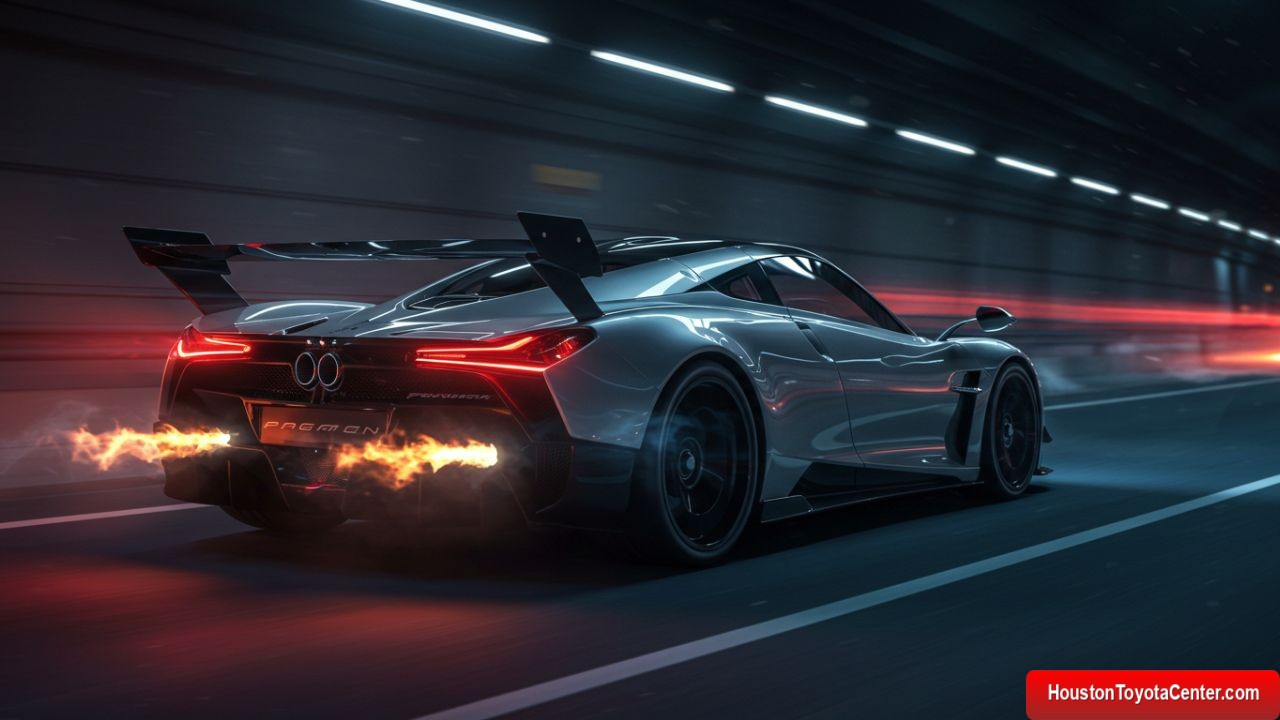The Pagani Utopia is a fusion of artistic expression and aerodynamic mastery. As Horacio Pagani’s latest hypercar, it embodies his relentless pursuit of perfection in both aesthetics and engineering. Unlike many modern hypercars that prioritize downforce at all costs, the Utopia seeks balance—delivering high-speed stability without compromising elegance.
This article explores the intricate science behind the Utopia’s aerodynamics, the philosophy that shaped its design, and the cutting-edge materials that make it an engineering marvel.
The Philosophy of the Utopia’s Design
Horacio Pagani’s design philosophy revolves around three pillars: simplicity, lightness, and driving pleasure. With the Utopia, Pagani sought to create a car that combined raw mechanical engagement with advanced aerodynamics, all while maintaining a timeless aesthetic.
Unlike the aggressive, function-first designs of many modern hypercars, the Utopia’s bodywork is a sculpture that seamlessly integrates airflow management. The car’s shape isn’t dictated by mere computational fluid dynamics (CFD) simulations; instead, it is an artisanal blend of handcrafted aerodynamics and engineering precision.
FREE: Quickly identify and understand problems with your vehicle 🚘
CLICK HEREPagani himself described the Utopia as a return to pure driving—without hybridization, excessive active aerodynamics, or digital interference. This philosophy shaped every aspect of its aerodynamic development.
Form and Function: How the Utopia Manipulates Airflow
Aerodynamics plays a pivotal role in the Utopia’s performance. Unlike its predecessor, the Huayra, which featured numerous active aerodynamic components, the Utopia employs a more passive yet highly effective system.
Below is a breakdown of the Utopia’s aerodynamic innovations:
| Aerodynamic Feature | Function | Benefit |
|---|---|---|
| Streamlined Front End | Channels air smoothly over the body | Reduces drag and front lift |
| Sculpted Rear Haunches | Acts as integrated air guides | Enhances high-speed stability |
| Rear Diffuser | Accelerates airflow beneath the car | Increases downforce without a large wing |
| Front Splitter | Directs air efficiently under the car | Improves front-end grip |
| Hidden Ducting | Manages cooling without disrupting aerodynamics | Balances cooling and drag reduction |
These elements ensure that the Utopia remains planted at high speeds without relying on oversized wings or complex moving parts.
The Absence of a Large Rear Wing: A Bold Choice
One of the most striking aspects of the Utopia is the absence of a large rear wing. In an era where hypercars like the McLaren P1, Ferrari SF90, and Koenigsegg Jesko employ active rear wings, Pagani took a different route.
The Utopia instead relies on:
- An advanced rear diffuser to generate downforce
- Strategic body sculpting to reduce drag
- Subtle aero channels integrated into the car’s design
This approach ensures that the Utopia retains an elegant silhouette while achieving aerodynamic efficiency. The decision to forgo an oversized wing reflects Pagani’s philosophy of blending function with artistry.
Material Science and Its Role in Aerodynamics
Pagani has always been at the forefront of material innovation, and the Utopia is no exception. The hypercar features Carbo-Titanium and Carbo-Triax, two proprietary composite materials that enhance rigidity while keeping weight to a minimum.
| Material | Properties | Impact on Aerodynamics |
|---|---|---|
| Carbo-Titanium | Lightweight, ultra-rigid | Reduces weight, enhancing agility |
| Carbo-Triax | Multi-layer composite | Improves structural integrity |
| Forged Aluminum Components | High strength-to-weight ratio | Contributes to chassis stiffness |
By using advanced materials, Pagani engineers ensured that the Utopia’s bodywork remains incredibly stiff, allowing for precise aerodynamic tuning without excess weight.
The Engine and Its Aerodynamic Considerations
The Utopia is powered by a 6.0L twin-turbocharged V12, developed by Mercedes-AMG specifically for Pagani. With 864 horsepower and 1,100 Nm of torque, this powerhouse requires careful cooling management.
Pagani incorporated a hidden air ducting system that optimizes cooling without creating excessive drag. The engine bay is ventilated through sculpted channels, ensuring that heat dissipation does not compromise aerodynamics.
Additionally, the placement of the exhaust system plays a role in airflow management. The signature quad-exhaust setup, positioned centrally, helps reduce turbulence and improves rear-end stability.
Comparing the Utopia’s Aerodynamics to Rivals
To understand the uniqueness of the Utopia’s aerodynamic philosophy, here’s how it compares to other modern hypercars:
| Car Model | Aerodynamic Approach | Downforce Strategy | Use of Active Aero? |
|---|---|---|---|
| Pagani Utopia | Passive airflow optimization | Rear diffuser and body sculpting | No |
| Koenigsegg Jesko | High-downforce aggressive aero | Massive rear wing and active elements | Yes |
| McLaren P1 | Hybrid active aerodynamics | Active rear wing and dynamic front aero | Yes |
| Bugatti Chiron | High-speed stability tuning | Adaptive rear wing and diffuser | Yes |
The Utopia’s reliance on passive aerodynamics rather than active wings sets it apart, delivering stability without the need for complex moving parts.
Driving Feel: How Aerodynamics Translates to Experience
Pagani designed the Utopia to be an emotive driver’s car, meaning that aerodynamics had to complement—not overpower—the driving experience.
Key characteristics influenced by aerodynamics include:
✅ Predictable Handling: The car remains stable at high speeds without sudden downforce shifts.
✅ Minimal Drag: Enables effortless acceleration and high top speeds.
✅ Balanced Grip: Keeps front and rear traction in harmony for a natural driving feel.
The end result is a hypercar that feels organic—an extension of the driver—rather than a machine dictated by computer-controlled aerodynamics.
Conclusion: The Utopia as a Masterpiece of Aerodynamic Art
The Pagani Utopia is a rare breed: a hypercar that respects the past while embracing the future. It showcases how aerodynamics can be seamlessly integrated into a vehicle without sacrificing elegance.
By forgoing excessive active aero elements, Pagani has crafted a machine that remains true to his philosophy of pure driving pleasure. The Utopia stands as a testament to the belief that beauty and performance can coexist harmoniously.
Whether admired for its sculpted design or experienced through its exhilarating dynamics, the Pagani Utopia is a celebration of aerodynamics, engineering, and artistic passion.


Leave a Reply